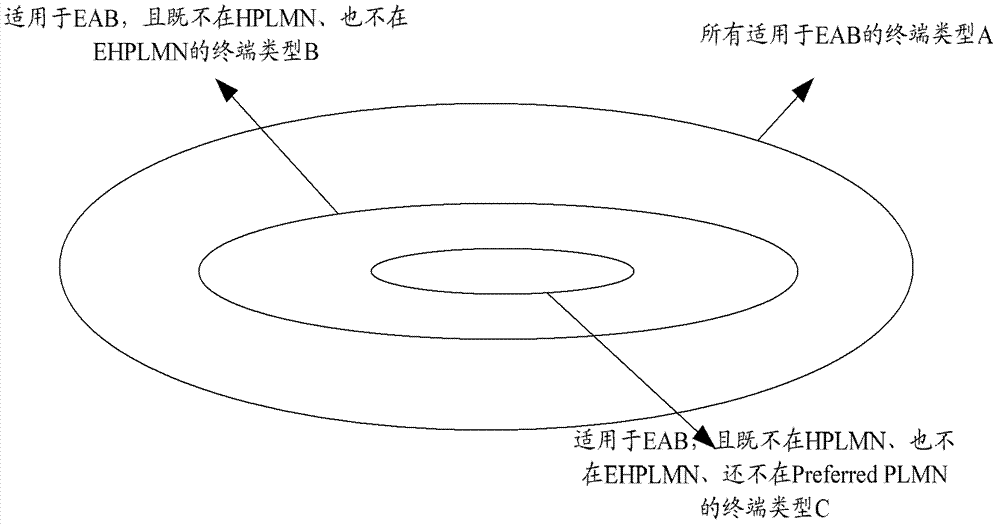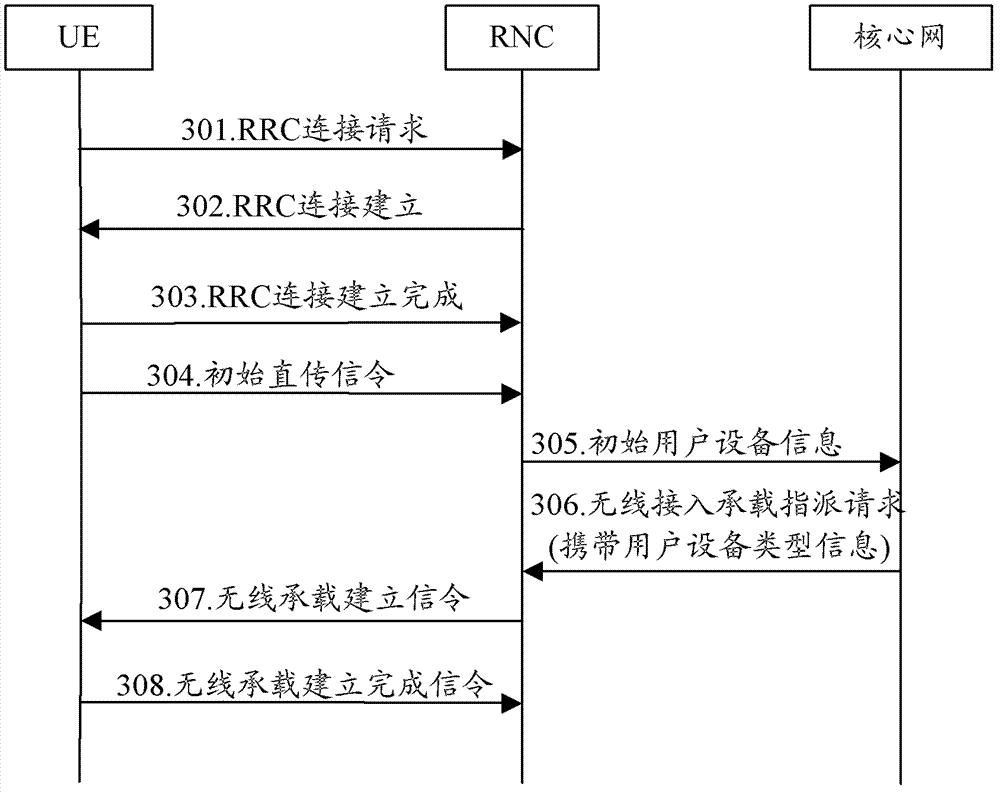Method and system for access control and network provider element
An access control and access network technology, applied in access restriction, electrical components, wireless communication and other directions, can solve the problems of not being able to know the load information of different types of UEs, and unable to set EAB parameters correctly, so as to improve user experience, The effect of ensuring the quality of business services
- Summary
- Abstract
- Description
- Claims
- Application Information
AI Technical Summary
Problems solved by technology
Method used
Image
Examples
Embodiment 1
[0072] This embodiment describes a method for configuring extended access control parameters on the network side in an LTE system.
[0073] In this embodiment, UE1 and UE2 reside in cell 1 under the jurisdiction of base station 1 and are in an idle state. Both UE1 and UE2 are configured as UEs applicable to EAB. In addition, the USIM card of UE1 indicates that the access class of the UE is 2, that is, the Access Class is 2. The USIM cards of UE1 and UE2 also store HPLMN identifiers, which may also include EHPLMN identifiers and preferred public land mobile network identifiers (preferred PLMN). In this embodiment, the HPLMN stored in the USIM card of UE1 is PLMN1, the EHPLMNs are PLMN2 and PLMN3, and the preferred PLMN is PLMN4. The PLMN broadcast in the system message of cell 1 is PLMN4. The HPLMN stored in the USIM card of UE2 is PLMN2, the EHPLMN is PLMN4, and the Preferred PLMN is not set.
[0074] According to the classification criteria of user equipment:
[0075] Ty...
Embodiment 2
[0101] This embodiment describes a method for configuring extended access control parameters on the network side in a universal mobile communication system.
[0102] In this embodiment, UE3 and UE4 reside in the cell 2 governed by the base station 2 and are in an idle state, and the base station 2 is governed by a radio network controller (RNC, Radio Network Controller). Both UE3 and UE4 are configured as UEs applicable to EAB. In addition, the USIM card of UE3 indicates that the access class of the UE is 4, that is, the Access Class is 4. The USIM cards of UE3 and UE4 also store HPLMN identifiers, which may also include EHPLMN identifiers and preferred public land mobile network identifiers (preferred PLMN). The HPLMN stored in the USIM card of UE3 is PLMN1, the EHPLMN is PLMN2 and PLMN3, and the preferred PLMN is PLMN4. The HPLMN saved in the USIM card of UE4 is PLMN2, the EHPLMN is PLMN4, and the Preferred PLMN is not set. In this embodiment, the PLMN broadcast in the sy...
Embodiment 3
[0122] In this embodiment, the UE5 resides in the cell 3 under the jurisdiction of the base station 3 and is in an idle state. UE5 is configured as a UE applicable to EAB. The HPLMN stored in the USIM card of UE5 is PLMN1, the EHPLMN is PLMN2, and the preferred PLMN is PLMN3. The PLMN of cell 3 is PLMN3, and UE5 belongs to Category B at this time.
[0123] UE5 needs to initiate a service, and UE5 needs to judge whether to allow access to the network to initiate a service request according to the EAB parameter or ACB parameter broadcasted by cell 3 (transmitted through a system message). At this time, the system information of cell 3 includes EAB parameters; UE5 uses the EAB parameters to implement access decisions. If the decision result is not barred, UE5 needs to implement access decisions based on ACB parameters. Random access can only be initiated when the random access decision is successful, and an RRC connection request is sent to the network side when the random acce...
PUM
 Login to View More
Login to View More Abstract
Description
Claims
Application Information
 Login to View More
Login to View More - R&D
- Intellectual Property
- Life Sciences
- Materials
- Tech Scout
- Unparalleled Data Quality
- Higher Quality Content
- 60% Fewer Hallucinations
Browse by: Latest US Patents, China's latest patents, Technical Efficacy Thesaurus, Application Domain, Technology Topic, Popular Technical Reports.
© 2025 PatSnap. All rights reserved.Legal|Privacy policy|Modern Slavery Act Transparency Statement|Sitemap|About US| Contact US: help@patsnap.com



